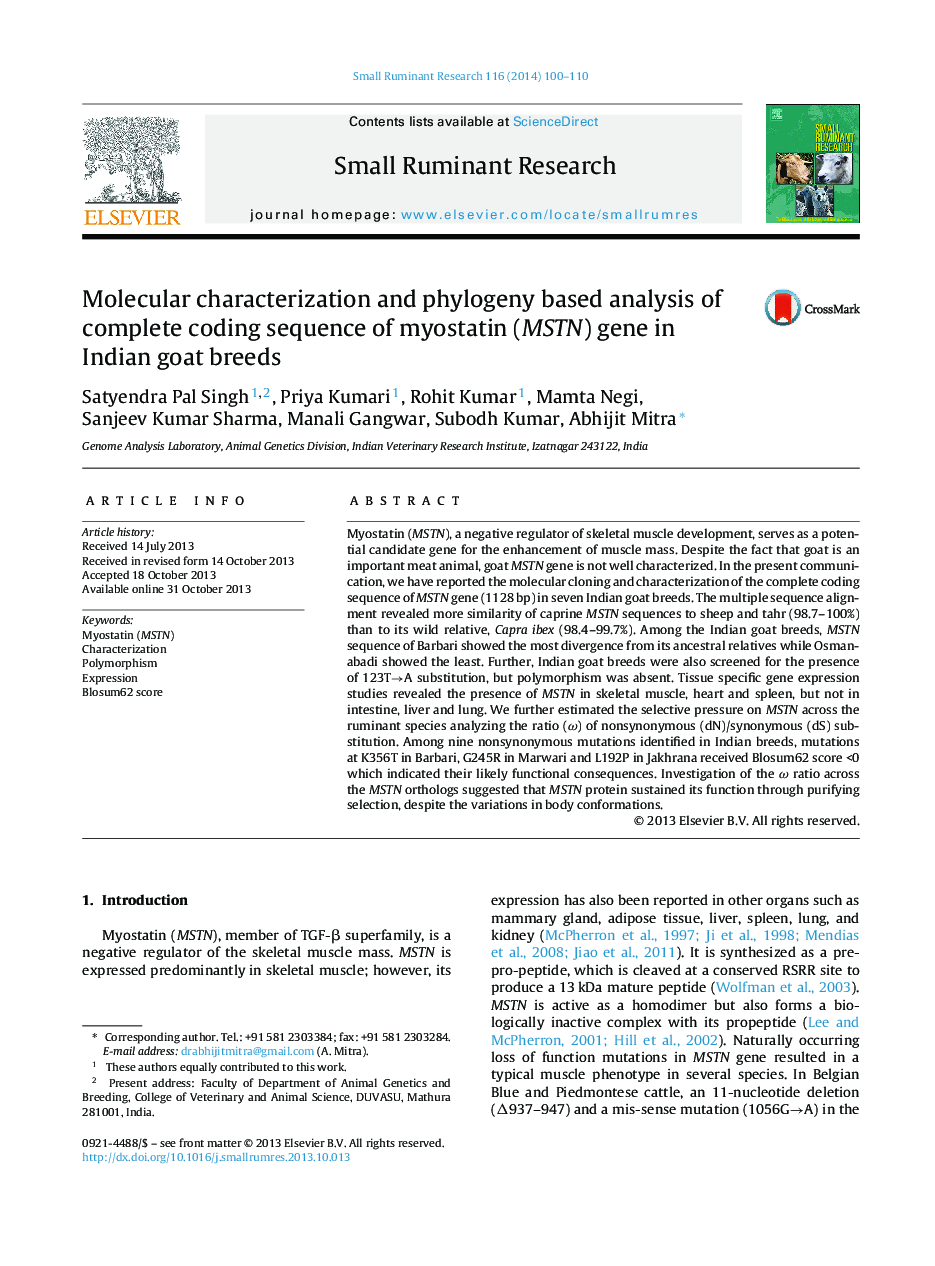| Article ID | Journal | Published Year | Pages | File Type |
|---|---|---|---|---|
| 2457095 | Small Ruminant Research | 2014 | 11 Pages |
Myostatin (MSTN), a negative regulator of skeletal muscle development, serves as a potential candidate gene for the enhancement of muscle mass. Despite the fact that goat is an important meat animal, goat MSTN gene is not well characterized. In the present communication, we have reported the molecular cloning and characterization of the complete coding sequence of MSTN gene (1128 bp) in seven Indian goat breeds. The multiple sequence alignment revealed more similarity of caprine MSTN sequences to sheep and tahr (98.7–100%) than to its wild relative, Capra ibex (98.4–99.7%). Among the Indian goat breeds, MSTN sequence of Barbari showed the most divergence from its ancestral relatives while Osmanabadi showed the least. Further, Indian goat breeds were also screened for the presence of 123T→A substitution, but polymorphism was absent. Tissue specific gene expression studies revealed the presence of MSTN in skeletal muscle, heart and spleen, but not in intestine, liver and lung. We further estimated the selective pressure on MSTN across the ruminant species analyzing the ratio (ω) of nonsynonymous (dN)/synonymous (dS) substitution. Among nine nonsynonymous mutations identified in Indian breeds, mutations at K356T in Barbari, G245R in Marwari and L192P in Jakhrana received Blosum62 score <0 which indicated their likely functional consequences. Investigation of the ω ratio across the MSTN orthologs suggested that MSTN protein sustained its function through purifying selection, despite the variations in body conformations.
